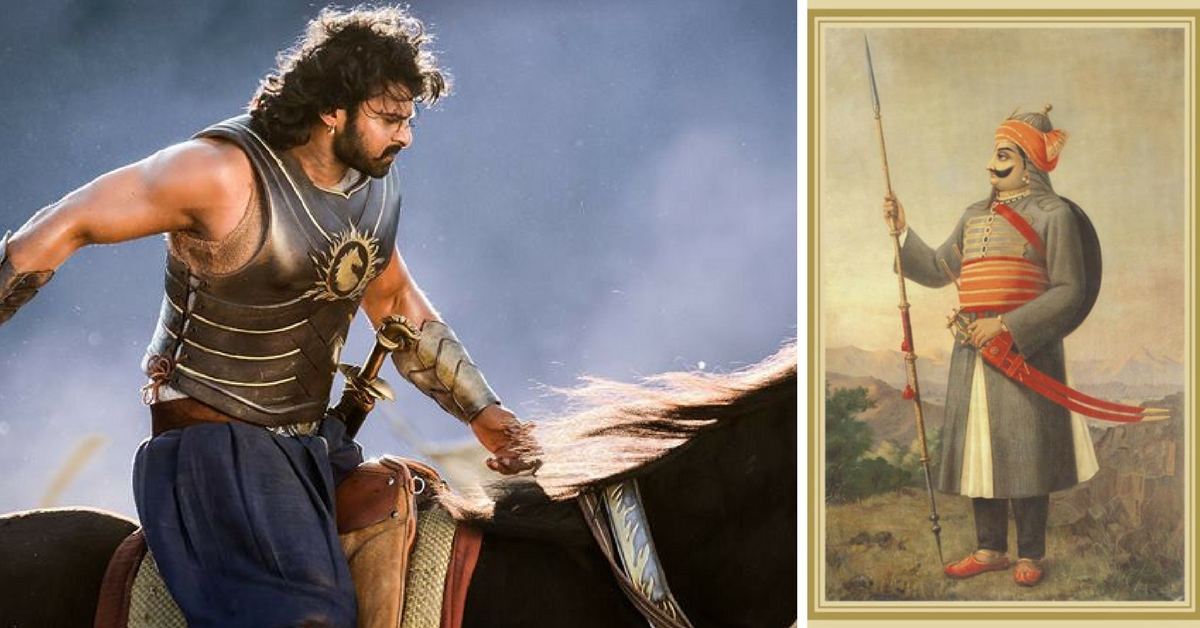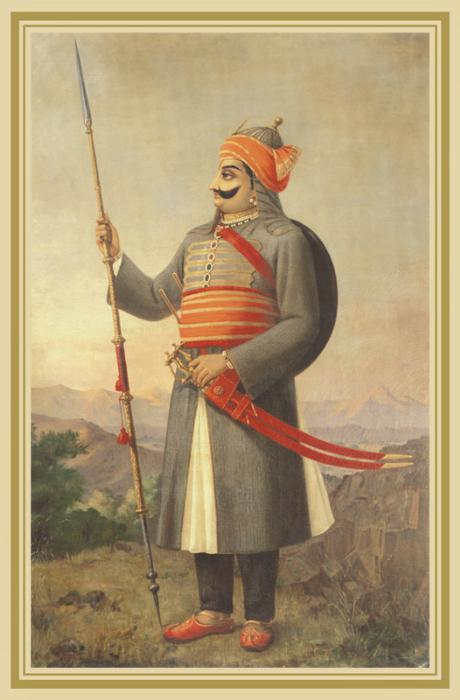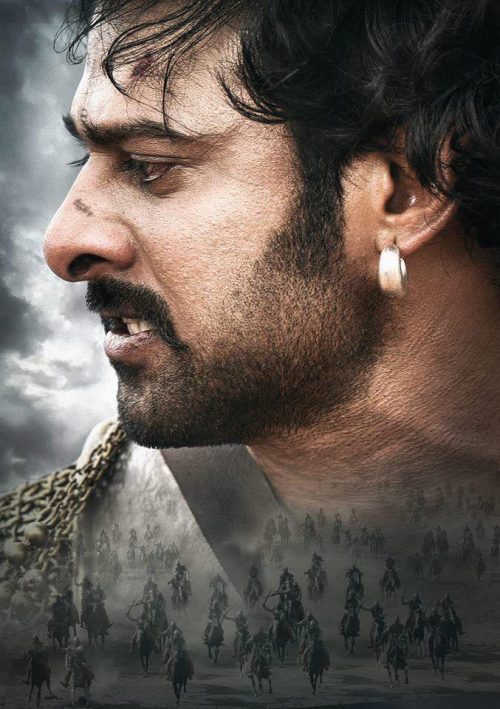The Legendary Maharana Pratap & Baahubali Have a Lot More in Common Than You Think!
Who says that real life can never match up to epic stories told on celluloid?

One of the main conclusions that one can make from the release of Baahubali 2: The Conclusion is that the film has scripted history by raking in incredible figures at the Box Office.
Much like its predecessor, this film is a heady mix of breathtaking special effects one might find in Hollywood films directed by stalwarts like Peter Jackson and the familiar imagery made popular by Amar Chitra Katha series. And much like its predecessor, it is a thoroughly entertaining movie that has enchanted audiences from across the country.
And while both films are entirely works of fiction, certain characters and places in the film are quite possibly inspired by actual Indian history. For instance, the region where the movies are set, called Mahishmati. While historians still struggle to pin down where exactly Mahishmati is supposed to have existed, it is said to have been the capital of Avanti kingdom and has even been mentioned in mythical texts like Mahabharata and Ramayana. According to various texts, Mahishmati was said to have been situated on the banks of Narmada but historians haven’t yet found concrete evidence of the ancient city.
And similarly, while the character itself is fictional, there are many undeniable similarities between Baahubali and the King of Mewar Maharana Pratap. Here’s how director S S Rajamouli has taken various stories surrounding the life of the celebrated king to craft an entirely unique character revered by millions in India.
A brief history of Maharana Pratap

Image source: Wikimedia
Pratap Singh (popularly known as Maharana Pratap) was the son of Udai Singh II, who is billed as the founder of the city of Udaipur in the present day Rajasthan state of India. While his father was still king in 1568, Mughal Emperor Akbar conquered the Chittorgarh Fort, which resulted in the royal family taking refuge in the foothills of the Aravalli range. It was here that Udai Singh II set up Udaipur and where Pratap Singh was crowned king himself.
Through his life, Maharana Pratap would clash with the Mughal forces led by Akbar. Despite the fact that Akbar sent diplomatic missions to Pratap, he refused to secede and never gave up the fight for his own kingdom. This led to an inevitable war between the Mewars and the Mughals in 1576, a clash that would be called the Battle of Haldighati. The battle resulted in a defeat for the Mewars as well as Pratap who had to retreat.
But even in defeat, he was not someone who could walk away.
In 1579, when the hold of the Mughals in the region had weakened due to rebellions, Pratap took advantage of this and went on to capture several of the territories he had lost to the Mughals.

Image source: Wikimedia
Due to his resilience and the fact that he stood alone against the forces of the Mughals, he continues to be celebrated for his valour and his persistence against extraordinary odds.
(Warning: There are mild spoilers below)
Where Baahubali and Maharana Pratap intersect

Image source: Facebook
There are many stories surrounding the life of Pratap that are similar to the events established in the two films. For instance, Pratap was part of the Guhilot or Gahlot dynasty. It is said that one of the Queens of Mewar escaped from the kingdom in 525 AD after the defeat of Balabhi. Upon escape, she found refuge with locals and gave birth to a son in a cave. This would be the beginning of the Guhlot dynasty and Maharana Pratap is said to be a descendant.
This incident is strikingly similar to the birth of Mahendra Baahubali (son of Amarendra Baahubali) as depicted in the film. The original film begins when a woman (seemingly of noble birth) comes out of a cave carrying a baby. And while she is hounded by soldiers intent on killing her, she sacrifices her own life to save the child.
Similarly, Amarendra Baahubali and Maharana Pratap were made kings despite resistance from others. While it is Bhalla Deva (the character essayed by Rana Daggubati) who fulfills the demands made by the Queen of the Kingdom, she ultimately crowns Amarendra as king for showing valour and leadership in war. In a similar vein, Maharana Pratap was actually not slated to become king himself. Rani Dheer Bai had wanted her son Jagmal to succeed Udai Singh (in fact Udai Singh himself is said to have declared Jagmal as his successor). But courtiers came together to fight for Pratap Singh to become king instead.
You may also like: Baahubali’s Mahishmati Empire Shares Its Name With This Ancient City in Central India
They argued that as the eldest son of Udai Singh (Pratap Singh had been born to Maharani Jaiwanta Bai), it was Pratap who was the rightful heir to the kingdom.

Image source: Facebook
You may also like: Baahubali Star Rana Daggubati Says He’s Blind in One Eye, and His Brave Revelation is Winning Hearts!
It is also perhaps not a coincidence that both Mahendra Baahubali and Pratap Singh were raised far from the trappings of royal life and were in fact for the large part raised in humble settings. In case of Baahubali, he was rescued by members of the tribal community and was raised by them. Similarly, it has been said that Maharana Pratap during his younger years had been sent to live in a village by Rani Dheer Bai as she wanted to groom her own son as the next king.
Now who says that real life can never match up to epic stories told on celluloid?
Like this story? Or have something to share? Write to us: [email protected], or connect with us on Facebook and Twitter.
NEW: Click here to get positive news on WhatsApp!

Similar Story

National Film Awards: 10 Real-Life Facts About Suriya’s Role in Soorarai Pottru
Strap: National Awards 2022: Soorarai Pottru has won Best Feature Film award and actor Suriya has won the Best Actor award. The movie is based on the true story of Captain GR Gopinath, founder of the Air Deccan airline.
Read more >
If you found our stories insightful, informative, or even just enjoyable, we invite you to consider making a voluntary payment to support the work we do at The Better India. Your contribution helps us continue producing quality content that educates, inspires, and drives positive change.
Choose one of the payment options below for your contribution-
By paying for the stories you value, you directly contribute to sustaining our efforts focused on making a difference in the world. Together, let's ensure that impactful stories continue to be told and shared, enriching lives and communities alike.
Thank you for your support. Here are some frequently asked questions you might find helpful to know why you are contributing?


This story made me
-
97
-
121
-
89
-
167












